For all its south-east Asian origins, ginger seems to me a very northern spice, its sweet heat perfectly attuned to the privations of a dull British winter. A whisky mac to cure a cold, a slab of parkin round the bonfire, a pocketful of gingernuts to cheer up a damp walk: all these things really ought to be available on the NHS from October to April.
Appropriately, then, ginger has a long history here: introduced by the Romans (who apparently prized it more for medicinal than culinary purposes), it enjoyed quite extraordinary popularity in Anglo Saxon and medieval times; the Oxford Companion to Food claims that, in the later middle ages "it was almost as common in England as pepper".
By the 18th century, however, the flamboyant flavours of the British table had become as subdued as our revolutionary spirit, and ginger was relegated to the biscuit tin. And while I'm intrigued by the idea of the pungent, garlicky, gingery sauces for meat beloved of the medieval palate, I can't in all honesty regret the invention of such delights as the modern ginger cake. Vaguely medicinal, and rib-stickingly, well, sticky, it's gloomy Sunday teatime in a big sugary slab.
Fresh, dry, crystallised or candied?

The most important ingredient in ginger cake is, of course, the spice itself. Most recipes call for ginger powder, but David Lebovitz eschews the dried stuff entirely in his aptly named fresh ginger cake, preferring instead to use a hefty 115g of fresh root. Until I taste the finished product, I'm inclined to agree with his assessment that this is "an overload" of ginger – for someone with a fondness for a McVities Jamaica Ginger cake the "spicy zing" is just too delicate.
Delia also uses fresh ginger in her preserved ginger cake, beefed up with the eponymous preserved ginger in the form of stem and ground, and a good couple of tablespoons of spicy syrup from the stem ginger jar for good measure. This one has a more distinctive, well-rounded gingery flavour, and the chopped pieces of stem ginger give the cake a more interesting texture, but again, there's no heat there. Otherwise, it's a jolly fine cake – Delia describes it as "quite simply my favourite" and I'm not surprised. Rich and buttery, it just lacks a bit of oomph.
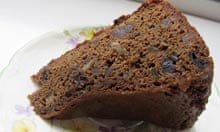
Geraldene Holt also goes for the multi-gingered approach in the "truly ginger cake" recipe in Geraldene Holt's Cakes (first published in 1980, and recently reissued by Prospect, this is an absolute gem of a baking book), adding chopped candied ginger as well as the fresh and powdered sort. I like this even better, firstly because candied ginger adds a pleasant crunch, and secondly because she uses an awful lot of all of it. Here's a cake with real spice.
Constance Spry, meanwhile, sticks to the basic ground stuff in her boiled ginger cake, as do the other two recipes I try. Although, with enough of it, as proved by the Ripon ginger cake contributed by a Mr Herbert M Bower to Florence White's 1932 collection, Good Things in England, there's no danger of dry ginger fading into the background, it seems dustily one-dimensional without the fresh sort. Ginger cake demands both the pepperiness of the dried form, and the "zing" of the fresh root for absolute perfection.
Sweet stuff
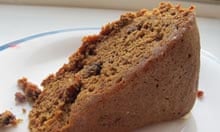
With the ginger aspect of things sorted (much and various will be my watchwords), it's time to turn to the other principal ingredient – sugar. Ginger cakes divide into two main camps: dark and sticky ... and golden and sticky. The former tend to deploy substantial amounts of treacle, as in Geraldene Holt, Mr Bower and Constance Spry's recipes, while the others generally opt for golden syrup (see what I mean about the stickiness?) and white or golden sugar.
I'm torn: I find treacle, or molasses syrup, as used by Delia, rather overpowering, but equally, a blonde, spongy cake seems criminally unseasonal: ginger and dark sugar go together like rum and smugglers. (In fact, put them all together and you'll have a hell of an evening on your hands.) As Geraldene Holt's cake has won my heart, flavour-wise, I decided to include her dark muscovado sugar, but replace the treacle with golden syrup instead: still sticky, but less bitter than its more assertive relative.
Method
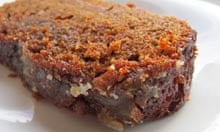
Both Constance Spry's and David Herbert's creations are boiled cakes – which, as I discovered during my Christmas cake period, sadly doesn't mean the entire thing is boiled rather than baked, but simply that the butter and sugar are heated together, before they are combined with the other ingredients. With the exception of David Lebovitz, the others all go for the more common creaming method, where the butter and sugar are beaten together before the eggs and flour are folded in.
The boiled cakes, such as Lebovitz's, which uses oil in place of butter, are all surprisingly moist, fluffy and light, but I think the strong flavour of ginger needs grounding with the denser, heavier crumb you can only get with the creaming method. Boiled cakes are often touted as quicker and easier, but as long as you have an electric beater or a food mixer, this is no longer true. Hurrah for technology, eh?
Extra ingredients

Mr Bower adds oatmeal to his cake. Unfortunately it strikes me, as I begin to mix up his recipe, having lined the tin and heated the oven, that it's actually not a cake at all, despite the name, but gingerbread, a distinction perhaps less strict in 1930s Yorkshire. And so it proves, when it comes out of the oven, some two hours later. In fact, the baking instructions have also been lost in translation because it's definitely overcooked: a crumbly peppery gingerbread quite out of place in this array of juicy, fluffy spice. Sorry Herbert, I haven't really done you proud at all.
Ginger isn't enough for many of these recipes: Geraldene Holt includes cinnamon, David Herbert mixed spice, and David Lebovitz an appropriately medieval mixture of cloves, cinnamon and black pepper. These all work well together, but I'm single-minded in my pursuit of a clean, fierce gingery flavour: anything else is a mere distraction.
Spry and Delia Smith both use ground almonds in the cake mixture, while she and Geraldene Holt fold in dried fruit: Spry raisins, Herbert chopped prunes and mixed peel. All of these things, combined with the dark, stickiness of the cake itself, are rather too reminiscent of Christmas cake for my liking. Save the dried fruit for the Dundee, or the Genoa: ginger cake needs none of it.
Finishing touches
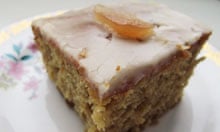
To finish his cake, David Herbert drizzles it with ginger syrup, while Delia opts for a simple lemon icing. Much as I love syrup, my cake is quite sticky enough already, and the crackle of biting into proper icing is too wonderful to resist. Because I'm a purist, I've gone for a ginger icing instead, using ginger wine, as suggested by Diana Henry in quite another cake entirely, and stuck a slug of the wine into the cake mix as well for good measure. Keep it simple. Embrace the ginger. It can only make you feel better.
Perfect ginger cake

100g butter, plus extra to grease
100g dark muscovado sugar
175g self-raising flour
4 tsp ground ginger
175g golden syrup
3 tbsp ginger wine
2 free-range eggs, beaten
Walnut-sized piece of fresh ginger, peeled and finely grated
150g candied ginger, finely chopped
75g icing sugar
1 piece of stem ginger, to decorate
1. Preheat the oven to 160C and grease and line a 23cm loaf tin. Cream together the butter and sugar with a pinch of salt until fluffy. Sift together the flour and ground ginger.
2. Pour in the golden syrup (the easiest way to handle the syrup is with a lightly greased spoon and a silicone spatula) and 1 tbsp wine and mix to combine.
3. Beat in the eggs, a little at a time, then gradually mix in the flour. Finally, stir through the fresh and candied ginger and spoon into the prepared tin. Level the top and bake for about 50–60 minutes until a skewer inserted into the centre comes out clean.
4. Allow to cool in the tin. When it's completely cool, make the icing by mixing together the icing sugar and remaining ginger wine and drizzle over the top of the cake. Slice the stem ginger thinly and arrange down the centre of the cake.
Is ginger the king of winter cakes, or do you have another favourite companion for a cup of tea at this time of year? And what are your other favourite ginger recipes, both sweet and savoury?
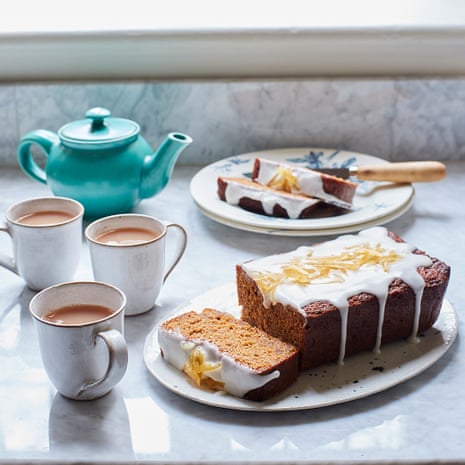
Comments (…)
Sign in or create your Guardian account to join the discussion